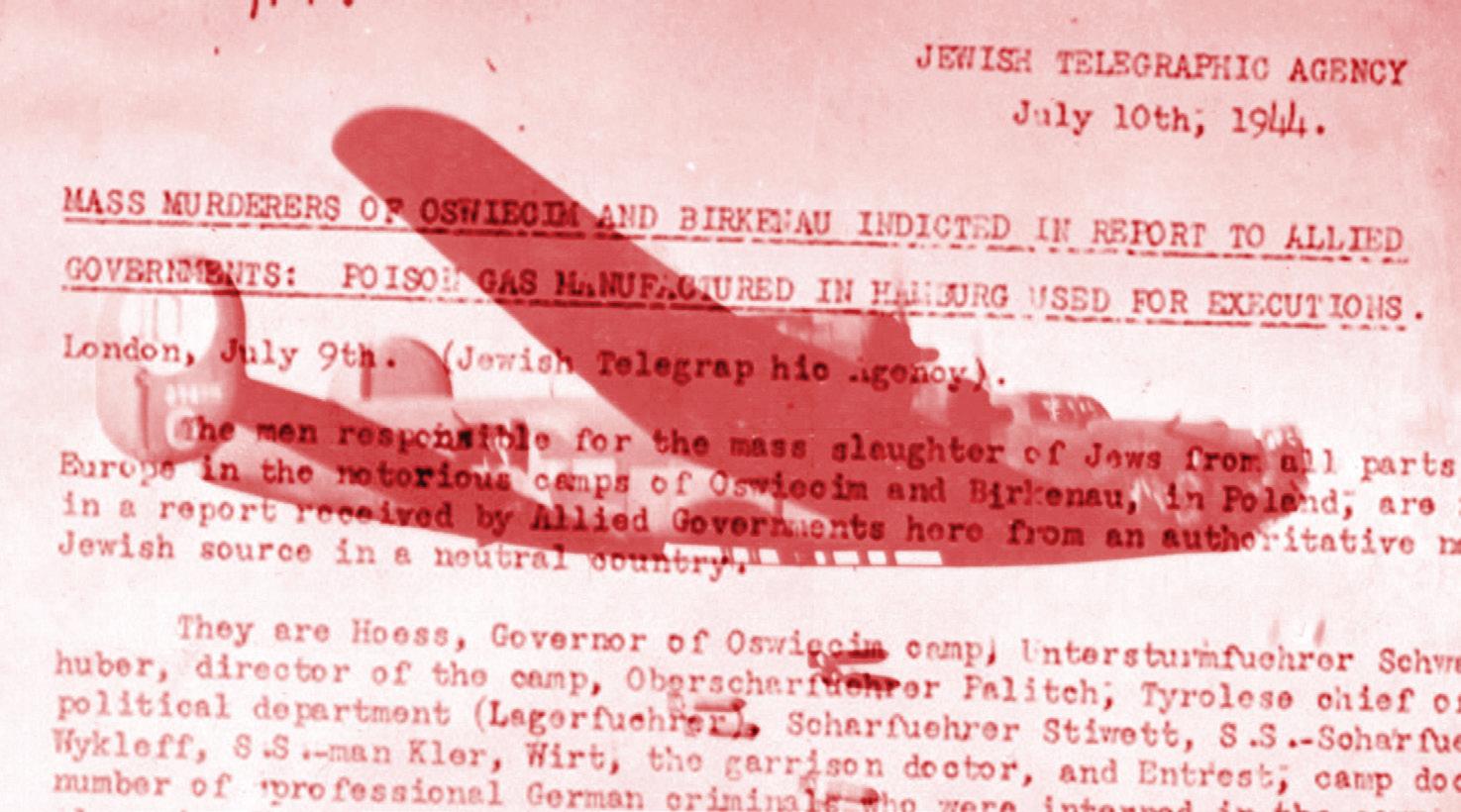
2 minute read
Ken Burns’ Holocaust documentary may be hard on America, but not hard enough
RAFAEL MEDOFF, MONTY N. PENKOWER | JTA
Seventy-eight years ago this week, David
Advertisement
Ben-Gurion rose before the Asefat Hanivcharim, Palestine Jewry’s elected assembly, and delivered an explosive “j’accuse” against the Allies for abandoning Europe’s Jews during the Holocaust.
The words of the man who would soon be Israel’s first prime minister take on added significance in view of the upcoming release of Ken Burns’ three-part, six-hour PBS documentary “The U.S. and the Holocaust.” Its official website says the film “dispels” the “myth” that America “looked on with callous indifference” during the Holocaust.
By contrast, Ben-Gurion told the gathering of Jewish community leaders in Jerusalem on Sept. 12, 1944: “As millions of Jews were taken to the slaughter — young and old, infant and newborn, mother and daughter — the world leaders, those who shout slogans about democracy and socialism, looked away from the bloodshed and did not undertake rescue action — they did not even try to rescue them.”
Two months earlier, Ben-Gurion had spoken in similar terms at a ceremony on the 40th anniversary of the death of Theodor
Herzl. Addressing himself to the Allies, he thundered: “What have you allowed to be perpetrated against a defenseless people while you stood aside and let them bleed to death, never lifting a finger to help?…. Why do you profane our pain and wrath with empty expressions of sympathy which ring like mockery in the ears of millions who are being daily burnt and buried alive in the hell centers of Europe?”
These words were not uttered after the fact. The Holocaust still raged as Ben-Gurion spoke. Trainloads of Jewish deportees were being sent to Auschwitz every day. On the day of the Herzl speech, July 10, three trainloads of Hungarian Jewish deportees arrived in Auschwitz. Over the course of four days that week, more than 30,000 Jews were gassed.
For a few weeks earlier that summer, BenGurion and his colleagues in the leadership of Palestine’s Jewish Agency had mistakenly believed that Auschwitz was a labor camp. But when they learned in late June that it was in fact a death camp, they lobbied Allied diplomats in Europe, the Middle East and the United States to bomb the railways and bridges leading to Auschwitz, or the gas chambers, or both.
Future Israeli president Chaim Weizmann and future prime ministers Moshe Shertok (Sharett) and Golda Meyerson (Meir) were among those promoting the proposal in meetings with Allied officials. In early September, just before the aforementioned meeting of the Asefat Hanivcharim, Jewish Agency official Eliyahu Epstein (Elath) reported to Ben-Gurion about his unsuccessful efforts to persuade a Soviet diplomat in Cairo that the Allies should bomb the death camps.
Roosevelt administration officials falsely asserted that the only way to strike the railways or the death camp would be to “divert” planes from distant battle zones, thus undermining the war effort. That claim is repeated in the Burns film as if it were a fact. In reality, American planes were already flying over Auschwitz, bombing the oil factories in the death camp’s industrial zone (where Elie Wiesel was among the slave laborers) — less than five miles from the gas chambers. One of those raids took place on Sept. 13, 1944, the day after BenGurion’s speech to the Jerusalem assembly.
In Ken Burns’ film, interviewees belittle the proposals to bomb the railways on the grounds that the Germans could have quickly repaired them. But that was true for all U.S. bombing attacks on railroads in Europe, yet it never deterred the Roosevelt administration and its allies from targeting them as part of the war effort.
George McGovern, the future U.S. senator and 1972 Democratic presidential nominee, was one of the young pilots who undertook those raids (including bombing the oil factories at Auschwitz). In a 2004 interview, McGovern argued that even if
HOLOCAUST DOCUMENTARY, PAGE 12









